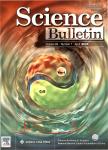Anisotropic effect on the vibronic reduction factors
Anisotropic effect on the vibronic reduction factors作者机构:Department of Physics and IT Medical College Shantou University Shantou China Department of Physics Shantou University Shantou China
出 版 物:《Chinese Science Bulletin》 (CHINESE SCIENCE BULLETIN)
年 卷 期:2006年第51卷第21期
页 面:2553-2558页
核心收录:
学科分类:080904[工学-电磁场与微波技术] 0809[工学-电子科学与技术(可授工学、理学学位)] 08[工学]
基 金:This work was supported by the Natural Science Foundation of Guangdong Province(Grant No.34613)
主 题:电子振动耦合 声子交迭 Jahn-Teller效应 各向异性
摘 要:The reduction factors p and q defined by Ham in the Ee JT system and their relation 2q-p=1 have been well accepted and the concept of reduction factors is widely used in the studies of vibronic coupling. However, when the system is under the anisotropic conditions, the reduction factors and their relation will change accordingly. The first-order reduction factors p and q of Ee system were further studied using the method of unitary transformation here. The relation between p and q proposed by Ham was investigated under both conditions of the linear coupling and the anisotropic effects. The result demonstrated that the relation of 2q-p=1 was only correct for the linear vibronic coupling, but not correct when the anisotropic effect was considered. This result suggested that the anisotropic effect influence considerably the reduction factors, and hence the physical properties of materials. Our method could be also applied to other JT systems, especially the highly symmetric JT systems involving C60 molecules.



